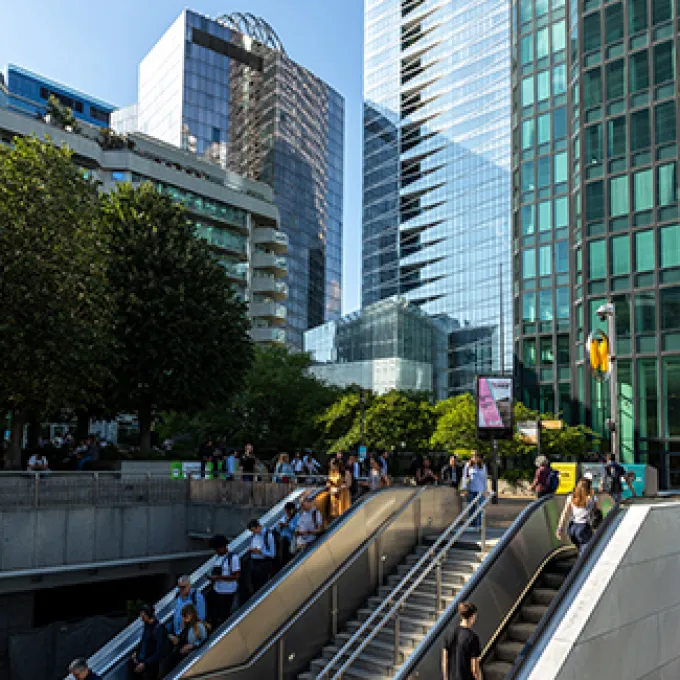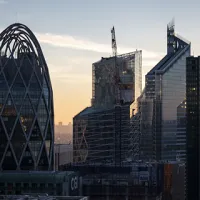
Decarbonization: Paris La Défense stays on track!
Goal achieved! The new 2024 territorial carbon footprint assessment confirms that Paris La Défense is moving in the right direction: a 40% reduction in greenhouse gas emissions since 1990 and a 14% reduction since 2019. Staying on course for 2030!
In 2021, Paris La Défense set itself an ambitious goal: to reduce its territorial greenhouse gas emissions by 50% by 2030 compared to 1990 levels. This target is more demanding than that of the National Low-Carbon Strategy! So, where do we stand? The new 2024 territorial carbon footprint assessment has just been released. And the results confirm that momentum is building.
The proof in the numbers
Total emissions for the region will amount to 760,000 tons of CO2 in 2024, representing a 14% reduction compared to 2019. This is despite an increase in the number of users in Paris La Défense: +12,000 residents, +11,000 students, and +18,000 employees. To achieve the 2030 target of 627,000 tons of CO2, the area must maintain a reduction of 3.1% per year. The good news is that between 2019 and 2024, the observed trajectory is slightly above this target. Paris La Défense is therefore on the right track! Three areas account for the majority of emissions: buildings (39%), transportation (36%), and food (16%).
Construction: less carbon, less concrete

Emissions linked to building construction have fallen by 9% since 2019, mainly due to the increase in the proportion of obsolete buildings being renovated rather than new buildings being constructed. It should be noted, however, that the effects of the new environmental standards (RE 2020 and subsequent) currently in force are too recent to have been measured yet.
Energy: the heating network is a game changer

The most spectacular progress has been made in the energy sector, with energy-related emissions down 27% since 2019! Several factors explain this impressive performance. First, there has been an overall decline in energy consumption, driven in particular by the energy crisis of 2022 and efforts to reduce consumption. Secondly, there has been a major upgrade to the La Défense heating network, which now uses much less gas. Furthermore, agro-pellets, which now supply part of the network, have not been included in the calculation. The CUBE competition, which encourages tertiary sector players in the area to reduce their consumption without major works, is also contributing to this downward trend.
Travel: the winning combination

Emissions linked to travel have fallen by 21% since 2019 for daily commutes, and by as much as 32% for air travel (business tourism). Several factors are at play here: the widespread adoption of remote working, the rise in active modes of transport (cycling, walking), and a sharp decline in business tourism since the Covid-19 crisis. The good news is that public transport remains the preferred mode of travel for workers and students. The latter, whose share has increased by 29% (in line with the rise in student numbers), use the metro, RER and bus 84% of the time. This is a major asset in limiting the carbon impact of daily commutes.
Food and waste: efforts that pay off

In terms of food, overall emissions fell by 4%, despite an increase in the number of users. Employee meals even saw a 24% drop in emissions, driven by teleworking and a slight decline in meat consumption. As for waste, emissions fell by 14%, driven by more moderate behavior, increased recycling, and teleworking. This is an impressive performance, despite the increase in the number of users in the region!
Cap 2030: maintaining momentum
These results show that Paris La Défense is on the right track. Positive dynamics are at work: energy efficiency, new behaviors, greener mobility, etc. But beware of the rebound effect! Construction delays linked to Covid-19 have shifted some emissions to subsequent years.
The challenge now? To continue our efforts and accelerate the decarbonization of construction. More than just a milestone, this is a momentum that must be maintained and amplified.



